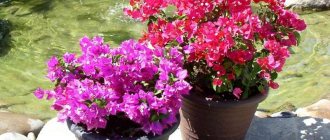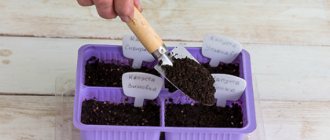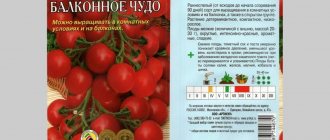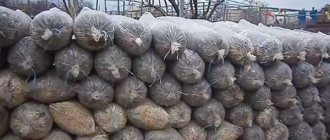Growing roses is one of the highly profitable types of business with a payback period of one season. The peculiarity of growing flowers is the possibility of production in any climatic conditions. This type of business is chosen due to the simplicity of business processes: availability of land; heated and illuminated greenhouse; wholesale base that buys products. Many summer residents already have a suitable site for production and a greenhouse, which allows them to quickly set up production. In this article we will look at the business of growing roses from scratch, and calculate the costs and profitability.
Take our proprietary course on choosing stocks on the stock market → training course
Relevance of the business idea
Rose is the most sold flower among florists. It is in greatest demand among buyers.
This is due to the following factors:
- excellent decorative qualities;
- pleasant aroma;
- resistance to adverse conditions.
Their popularity among florists is explained by the fact that roses are relatively easy to cultivate. In addition, many hybrid varieties have appeared that are resistant to diseases, low temperatures and other unfavorable factors.
Species diversity allows you to create unique flower arrangements. Moreover, roses are available all year round, and the demand for them is constant.
The demand for these flowers is also explained by the fact that they are massively popularized in culture. The fashion for roses is shaped by advertising, movies and TV series, and other elements of popular culture.
High demand for products is the main reason why a business project for growing and selling roses will be successful. Up to 70% of the flower market belongs to roses.
Even despite the high level of competition, the enterprise can become a source of profit and open up opportunities for gradual expansion.
Methods to increase the profitability of a flower business
To increase the profitability of a rose growing business, you can increase the share of debt capital. In other words, take out a loan for business development (usually issued to individual entrepreneurs): Russian Agricultural Bank OJSC, Agrobank OJSC, etc. Borrowed funds will allow you to scale production through the construction of new greenhouse complexes. The use of borrowed funds is justified if there is a stable cash flow (net profit) from sales and there is a network of distributors and buyers.
| Business valuation | Financial analysis according to IFRS | Financial analysis according to RAS |
| Calculation of NPV, IRR in Excel | Valuation of stocks and bonds |
Advantages and disadvantages
Growing and selling flowers is not a new business idea. However, any project can be improved. Growing roses is inextricably linked with the use of modern technologies, from the design of greenhouses to innovative fertilizers.
The main advantages of the business project:
- high demand for products;
- minimum difficulties when registering an enterprise;
- possibility of starting with minor capital investments;
- high profitability;
- quick payback;
- Possibility of production in any climate zone.
A flower business is ideal for citizens living outside the city or having a country plot. This eliminates the need for an initial investment in finding a place to grow roses.
Disadvantages of business:
- competition;
- uneven nature of production;
- Need experience in growing roses.
To grow roses for sale, you will need knowledge of gardening. An alternative option is to hire experienced flower growers, but this is fraught with additional costs.
How and to whom to sell?
The most profitable way to sell finished products in this business is wholesale sales on an ongoing contract basis to large flower salons and markets. A novice entrepreneur, in order to develop a permanent customer base and make his products competitive, should act as follows:
- at the initial stage, you need to reduce the cost compared to other flower suppliers;
- create a flexible system of discounts with an individual approach to each wholesale buyer;
- for effective advertising, you can release a catalog of finished products on paper and on the Internet (including on social networks);
- regularly inform potential buyers about ongoing promotions and bonus programs.
You can open your own retail outlets to sell your products or an online store.
Registration and legal form
Success can only be achieved if the enterprise is legal. Therefore, you need to register your business with the relevant government agency. Growing and selling roses is an area that fits several forms of business organization (see Table 1).
Table 1.
| Organizational form | Distinctive features |
| IP | Suitable for gardeners who plan to sell their own flowers. This will require product certification. |
| Peasant farming | The founder of the peasant farm is an individual entrepreneur. But the farm also includes other participants involved in a specific area. This option is convenient when relatives or friends are involved in the implementation of the project. |
| Personal plot of land | Suitable for those who plan to sell grown roses through intermediaries. Allowed for owners of plots an area of no more than 2 hectares. |
| OOO | A legal entity that is engaged in the cultivation and marketing of products in large volumes. The LLC has a large number of employees, partners, and investors. |
Individual entrepreneurs and private household plots are considered the best options. These forms of organization open up many opportunities for the entrepreneur. There are also restrictions, but if necessary, you can always reorganize the enterprise in order to change the organizational form.
About the specifics of growing roses in greenhouses in the video:
Legal side of the issue
To carry out business activities, all documents must be completed. To do this, register as an individual entrepreneur (individual entrepreneur) or LLC. Although, if the volumes of flowers grown do not exceed certain standards for sale, then the private subsidiary plot (personal subsidiary plot) form of doing business will be more profitable.
Since this activity relates to the agricultural sector, it is worth taking advantage of government programs that provide assistance to aspiring entrepreneurs in this area. Having completed everything properly, you can count on benefits when paying taxes, and there is also a chance to receive a grant or other form of material compensation for development.
Greenhouse arrangement
Equipping a room for growing roses is the main cost item at the early stage of project development. For many novice entrepreneurs, the question is whether it is possible to abandon the greenhouse and grow flowers in open ground.
This possibility exists, but the process of cultivating ornamental varieties of roses in OG is much more complicated. The main disadvantage is that when grown in an open area, roses are more susceptible to negative effects. They are affected by diseases and pests, which can lead to loss of plantings and subsequent losses.
A greenhouse is a long-lasting investment that will allow you to grow roses and other plants with minimal risk of loss. A special room reduces the influence of seasonal factors. Roses are grown in the greenhouse year-round, regardless of the conditions outside.
The best option is a greenhouse with an individual heating system. Such buildings are made of polycarbonate. In the southern regions, where the temperature in winter is not too low, film greenhouses can be used without additional heating.
Basic hydroponic systems
There are several of them. In the industrial production of roses, the most popular are low-volume and nutrient layer techniques. In the first case, the cuttings are planted in mineral blocks. After the roots appear, the blocks are installed on mats in which drainage holes are previously cut. The drip irrigation system connected to them supplies food with a precisely calibrated composition and in the required volume.
When using the nutrient layer technique (NFT), plant roots are placed in a common irrigation channel. The nutrient solution enters from one side and flows into the reservoir on the other, washing the roots along the way. This method also worked well when growing such a capricious crop as roses.
Equipment for growing roses
In addition to the construction of the greenhouse, initial costs will be associated with the purchase of the necessary equipment. Gardeners who have previously grown ornamental plants have lower initial costs.
You will definitely need:
- garden tools;
- irrigation equipment;
- containers for rooting cuttings;
- peat glasses;
- organic and mineral fertilizers;
- Lightning equipment;
- climate control equipment (moisture collectors, humidifiers, heat fans, heaters).
A separate expense item is the purchase of planting material. Most ornamental varieties of roses do not propagate by seed. For planting, cuttings or bush divisions are used. The cost of some varieties reaches 1500-2000 rubles per 1 seedling. The minimum price for common types of roses is from 200 rubles.
Which varieties to choose
Flowers grown for sale must meet several important criteria. It is ideal when the variety combines ease of care and decorativeness. There are quite a few hybrid varieties that fit this description. Therefore, you can rely on your own preferences and tastes. You can also familiarize yourself with the assortment of competitors in order to grow rare roses and thereby attract buyers.
When choosing, the following criteria are taken into account:
- Frost resistance. Even though roses are grown in a greenhouse, they must be resistant to low temperatures. For cultivation in the central zone of the Russian Federation, varieties that belong to frost resistance zones 2-5 are suitable. Similar varieties can be planted in Siberia and the Urals, where climatic conditions are unfavorable. For the southern regions, you can choose roses from zones 6-8.
- Drought resistance. Most varieties do not tolerate the lack of moisture. But some types of roses are resistant to short-term drought. They are perfect for entrepreneurs who do not have the opportunity to water flowers daily.
- Attitude to light. Light-loving varieties are better suited for growing in greenhouses. However, shade-tolerant ones can also be planted. The main thing is that bright light does not damage the decorative qualities of flowers.
- Disease resistance. There are no universal varieties that are not sensitive to all infections. For greenhouses, it is recommended to choose roses that are resistant to common and dangerous diseases. These include powdery mildew, gray rot, rust, septoria, and leaf mosaic.
When selecting a variety base, you should pay attention to the following varieties:
- Abraham Darby;
- Red Velvet;
- Charles Austin;
- Iceberg;
- Zorina;
- Pascal;
- Niccolo Paganini;
- King Arthur.
The listed varieties are included in the rating of unpretentious roses. They can be grown both in greenhouses and in open ground.
Purchase and preparation
If you are just starting out in the floriculture business, then the first batch for growing roses should be purchased in the form of seedlings. Calculate how many and what variety you'll need, then get to work selecting and preparing your plants.
It is best to buy them in special nurseries or garden centers. This way you will be protected from the risks of purchasing spoiled or diseased material. Please note that the root system can be closed or open. Always inspect them carefully for damage. Healthy and viable seedlings look like this:
- roots are strong and elastic;
- no spots, cracks, or wrinkled formations are observed;
- the stems themselves are cut at a height of 20-30 cm and have up to 4 green buds;
- at the same time, the plant looks alive and flexible with a characteristic color.
To carefully transport the seedlings to your site, they need to be packaged. To do this, the roots are wrapped in a clean, damp cloth or placed in a moss or peat substrate in a separate bag. With a closed root system, that is, when selling them in pots, you just need to water the plant and pack it in suitable boxes.
Before you plant rose bushes, keep them for some time at a temperature of 4-6 degrees. If long-term storage is expected, then the air readings are set at 2-3°.
Before planting, the plants are additionally inspected. If the roots have dried out slightly, they are placed in a container with cool water for a day or a day. You also need to treat them with a solution of copper sulfate or some other antibacterial drug. To do this, the root part is immersed in the mixture for 10 minutes and then rinsed.
Some gardeners, in order to accelerate the growth of plants before planting, additionally treat them with stimulants. Only after all of the above procedures can the seedlings be placed in the prepared soil.
Initial investment
The main expense item is the construction of a greenhouse. Depending on the size, construction can cost from 25 thousand to 200-300 thousand rubles. The optimal size of the greenhouse is 100 square meters. m. In such an area you can plant about 400 rose bushes. With an average cost of a seedling of 500 rubles, the cost of planting material will be about 200 thousand rubles.
In this matter, it should be taken into account that the cost of different varieties varies. In addition, planting material may not take root in a new location, so it is recommended to have 50-100 additional seedlings in stock.
The cost of tools and equipment will amount to up to 100 thousand rubles, which also depends on the area of the greenhouse and the number of plants grown. In total, to open your own enterprise from scratch you will need at least 700 thousand rubles, provided that the land plot is owned by the founder and no rent is charged for it.
Brief business plan for the project
Private entrepreneurship involves solving 3 issues - money to open a business, distribution channels for products and resolving the issue with competitors.
Knowledge in plant growing is considered a secondary point - hiring a specialist in this matter is not a problem, although the basic principles of growing roses will still have to be studied.
Next, we will step by step analyze the most significant points in planning a business for growing roses.
1) Business registration
The first harvest can be used as a test harvest according to the gray scheme. Many villagers, in parallel with their main work, are engaged in growing flowers for sale. The profit received is a pittance, so there are no claims from tax authorities against them. It’s another matter when a person installs a heated greenhouse and switches to mass sales.
The table below will tell you about the forms of business organization.
| Form | Situational applicability |
| Private household plots | Stands for personal household plot. Suitable for people who do not want to have legal status, but prefer to work as an individual. Sales markets for products are distributors and flower shops. To work, you will need only one document - a certificate from the local administration. |
| IP | Individual entrepreneur. The status has legal force, which allows you to organize your own sales of products. The only difficulty in this format is the need for certification. |
| OOO | Focus on large-scale cultivation using borrowed funds from investors. It is convenient to cooperate with wholesalers and stores. One of the features is the need to register employees. |
| peasant farm | Peasant farming is suitable for involvement in the project of partner funds. According to legal features, it is a simplified type LLP. |
A novice businessman immediately discards LLCs and peasant farms - these formats are only suitable for a large-scale project of 10+ greenhouses.
For beginners, individual entrepreneurship is considered to be the best option. The tax rate will be 6%. Taxation system - simplified tax system or unified agricultural tax at the discretion of the owner.
2) Choosing a variety of roses
Now there are about 1000 varieties of roses. Literally everything is different - the shape of the petal, the color, the shape of the bud, and so on. It doesn’t make sense for a novice entrepreneur to splurge on expensive and exclusive varieties, because the demand for such goods will be lower.
Justification: high price. Below are the most acceptable flower varieties for the climatic conditions of the Russian Federation (most of it).
TOP 3 varieties of roses for growing for sale:
- Black Baccara (MEIdebenne)
The hybrid comes from France. Due to the blackish tint of the bud, the variety is often called “black rose”. When open, the petals are dark red in color. There is 1 bud per stem.
In size - up to 8 centimeters in diameter and no more than 1 meter in height. The width of the growth is up to 70 centimeters. Medium resistance to powdery mildew and black spot;
- Casanova
Mostly yellow roses (there are other similar hybrids). The height of the plant reaches 2.5 meters, and the diameter of the flower reaches 15 centimeters. Frost resistance zone 5-6, which makes the flower very unpretentious to weather conditions. High disease resistance + lush and long flowering make the variety one of the most popular among gardeners;
- Scarlet Gem
Small flowers from 3 centimeters, which are ideal for forming bouquets of roses. The height of an adult plant reaches 40 centimeters. The variety is classified as miniature, but thanks to the repeated flowering cycle, the roses are perfect for growing and selling.
Other popular rose varieties include Beauty Secret, Zorina, Little Flirt, Geheimrat Duisberg and Carina. In principle, you can go to any seed/plant store and consult with the seller. If he is competent in the matter, he will immediately offer a choice of up to 20 varieties of roses that would be good for growing for sale in your region.
Rules for selecting and purchasing rose seedlings:
- Buy from specialized outlets. These include nurseries or specialty stores. Here the seedlings are properly grown and stored until they fall into the hands of the buyer.
- Preliminary study of the assortment. We determine the parameters of height, diameter and level of resistance of roses for sale. Secondary parameters – duration and frequency of flowering + garden group.
- The issue of vaccinations. There are 2 types of seedlings - grafted and on their own root system. In the first case, we obtain the classic characteristics for the variety in the technical description. In the second case, the type of rootstock is specified - for open ground or for greenhouse cultivation.
- Buy young animals. For roses, these are seedlings aged 3 to 4 years. Old plants do not take root well in a new place and produce a high percentage of defects. The situation is similar with too young plants - a weak root system may not withstand temperature changes and repeated plantings in new soil.
- The nuance of seedlings with “bare” roots. When purchasing a batch of bare-root plants, select plants with 2 or 3 woody stems. The stem of the plant has the right to be greenish, but without wrinkles and obvious drying.
- Avoid illness. Spots on the stem or leaves are a clear sign of a low-quality seedling.
Externally, seedlings with their own roots are weaker than grafted ones. It takes at least 2 years without replanting to form a full-fledged root system. During this period, there is a high risk of plant loss due to disease or care errors. For grafted ones, a strong root system after the first year, but additional work to cut out wild shoots of the rootstock in the future.
3) Methods of growing roses + technology
Before starting a business, you should choose a method of growing a flower. There are 3 technologies in total - seed, cuttings and through division of bushes.
The first option is considered long-term and does not always pay for itself, but cuttings and division are the best for a beginner in business. When dividing, you will need to purchase mature plants as seedlings.
We described above how to choose roses correctly, and then let’s touch on the nuances of planting, equipment and plant care.
A) What kind of greenhouse is needed?
It has already been stated that the optimal solution for growing roses will be a heated greenhouse with specialized equipment that will allow maintaining a uniform microclimate throughout the year.
How to grow cucumbers in a greenhouse: 4 steps for care
Please note: thermos greenhouses are popular in 2022. By making maximum use of sunlight, an entrepreneur will be able to save up to 80% on electricity costs.
To effectively use the thermal properties of the structure, it is necessary to comply with the recommended dimensions - up to 500 centimeters in width and up to 30 meters in length.
Note that the length of the greenhouse does not affect the properties of solar energy absorption, so here you should start from your own measurements. The northern wall should be higher than the southern one + made of opaque material. The height values are 2 and 3 meters, respectively.
Why is the northern wall made high and opaque:
- the side is not involved in heating;
- the vestibule of the structure is placed here, placing the boiler, furnace, fertilizer inventory and other equipment;
- the northern part will serve as the base of the solar collector.
The roof of the greenhouse is pitched in one direction. A small angle will reduce the bevel of the rays, increasing the level of heating inside the building. Placing the structure strictly from west to east is a necessary condition for the operation of a thermos greenhouse. The table below will tell you about other features of the building.
| Work element | Description |
| Foundation | Tape type with reinforcement. Depth up to 1 meter. A cushion of gravel and sand is placed at a distance of 80 centimeters from the surface and 30 centimeters thick. The height of the base is from 25 centimeters and above. Do not make a low base - this will increase corrosion of the structure. |
| Materials | Both wood and metal are acceptable. A modern solution is a light alloy metal profile. The beams look bulky and block good access of the sun to the inside of the greenhouse. The greenhouse covering is 2 layers of cellular polycarbonate. |
| Thermos effect | It is formed by 2 layers of polycarbonate with an air layer. The resulting sections provide ventilation through holes in the frame. Air circulation will help equalize temperature differences between sections, leveling them to an average value. |
| solar collector | Converts the sun into heat and transfers it to the greenhouse through air currents. In a greenhouse thermos, this role is played by the northern wall. Bars with a gap of 0.6 meters + black film on top + holes for air circulation. Targeted supply of warm air to the beds can be organized through plastic tubes. |
Auxiliary methods for heating the air and the surface of the earth include roofing material. A layer of material spreads in winter between the beds and around the perimeter behind the greenhouse. When heated, a cushion of warm air is formed, which increases the temperature by 2-4 degrees inside the greenhouse.
Another source of heating is water systems with an electric boiler. As a more expensive alternative - gas supply with boilers. Here you should start from the financial capabilities of the entrepreneur.
B) Preparation of seedlings and soil
The development and further growth of the seedling depends on the quality of the soil. Planting in “old” soil will no longer be necessary - the soil is oversaturated with bacteria and pests, and therefore your cutting will rot in a matter of days. If flowers were previously grown in the area, a 40-55 centimeter cut of soil is made, and new soil is poured in its place.
The rose soil recipe includes:
- 2 parts of garden soil;
- 1 part of manure that has already rotted;
- 1 part peat;
- 5 parts sand for clay soil;
- 5 parts clay soil for sandy soil;
- 1/25 part bone meal;
- 1/50 part of superphosphate;
- 1/25 part dolomite flour.
The ingredients are thoroughly mixed and the trenches dug under the beds are filled with the solution. The width of each trench is from 40 to 55 centimeters, depending on the size of the plant. With pit planting, a hole is formed in the form of a cube with a side of 20 centimeters. The top 1 bayonet layer of soil is discarded and filled with a solution according to the recipe above.
Previously purchased seedlings are pre-disinfected with a solution of copper sulfate (30 g per 10 liters of water). Foundationazole is also suitable (1 tablespoon per 10 liters). If there are dried roots, the plant is placed in water for 24 hours. The roots are wrapped in a wet cloth (shoots with wet paper) and plastic wrap. This way we get a risk-free shelf life of 1-1.5 weeks.
Preparation for landing:
- pruning and removal of weak and dried shoots + roots. “Strong” shoots should have up to 5 eyes, and weak ones up to 3;
- the cuts are covered with garden varnish;
- immersion in sodium humate solution for 10-12 hours;
- to avoid drying out the root tips, they are treated with a clay mash;
- You can also wrap the roots in wet burlap.
It is better to carry out planting work on cloudy days in the evening. Soil that is too damp or frozen will not work. We will tell you more about planting and care later.
Current expenses
The business of growing roses is multifaceted and it is impossible to predict all possible costs. But the bulk of current expenses can be calculated in advance.
Main sources of costs:
- heating and lighting of the greenhouse;
- operation of the irrigation system;
- spraying bushes against diseases and pests;
- mineral and organic fertilizers;
- replacement of soil mixtures.
For watering and lighting, electricity must be installed in the greenhouse. Electricity costs vary depending on the season and area of the building. Costs increase from late autumn to mid-spring when heating is needed.
Independent sale of roses is associated with additional costs for:
- maintenance of the point of sale of flowers;
- transportation;
- product advertising;
- tax deductions;
- employee salaries.
Even with large sales volumes, it is impossible to immediately recoup the enterprise. However, such a prospect opens up in the shortest possible time, provided that constant income exceeds current costs.
Cutting, storing, transporting roses
Cutting roses
At the beginning of April, the first roses begin to bloom. In total, roses are cut four times during the growing season. Cutting is carried out to the first true (five-leafed) leaf, from the axillary bud of which the flowers of the second or third flowering subsequently develop. The fourth flowering produces I and II grade products.
In Latvia, where the forcing culture of roses is at a fairly high level, according to the standards adopted in the country for cutting flowers from 1 m2 of inventory area, the following is established: for one-year plantings - 30 flowers, for two-year plantings - 50, for plantings older than 2 years - 75 flowers.
Growing roses indoors for cutting requires choosing varieties that have strong, well-forming bushes with good ability to recover.
Flowers must have the correct goblet-shaped perfect shape, constant, well-preserved color, pleasant aroma, be preserved for a long time when cut in water, and tolerate packaging and shipping well; in addition, the buds should have an elongated shape and bloom slowly, and the flower stalks should be long (at least 20 cm), straight, with beautiful healthy leaves and few spines and ending in one flower.
Cutting varieties must be highly resistant to diseases and pests.
The rose should be cut to the first or second true leaf, from the axillary bud of which shoots of the second or third order subsequently develop, producing high-quality cuttings.
Cut roses with a sharp knife or pruning shears so that the ends of the stems are not compressed. The leaves on the cut shoot must be clean and healthy so that the presentation of the cut products does not deteriorate.
Roses in bud state are cut in the early, cool hours.
The condition of the bud in which the rose is cut depends on the variety. Full-double varieties with slow buds should be cut when they are half open. Roses with short central petals are cut in bud state.
For example, the Ophelia variety and its mutants are cut in the bud state after the tips of the sepals bend down, the petals become colored, and the buds open halfway. These buds bloom well in water. The varieties Madame Butterfly, Rapcher, etc. are cut in the same condition.
Varieties Columbia, Better Times, Briarcliff, etc. - cut at the stage of beginning to open the buds.
In hot weather, roses are cut in a less open state than in cool weather.
Storing roses
Cut roses are immediately transferred to a cool room; there they are sorted, the spines are cut off and placed in cold water.
The optimal storage temperature for cut roses is 3°. If cut roses need to be stored for a longer time, then they are stored at 0°C and high air humidity.
You can store roses not in water, but wrapped in damp paper, 10-20 pieces each. The blooming of buds occurs more slowly than when stored in water.
Transportation of roses
To ship over long distances, roses cut at dawn are sorted, but not immersed in water, and each individual bud is carefully wrapped in tissue or wax paper and carefully placed in two or three layers in cardboard boxes, interleaved with parchment paper. It is advisable to place the ends of the cut shoots in damp moss or paper when packaging.
To pack roses, use cardboard boxes 50-60 cm long, 30 cm wide and 20 cm high with holes on the sides 1-2 cm in diameter for ventilation.
After transportation, roses are unpacked, placed in water and under water an oblique cut of the shoot is made at a height of 2-2.5 cm.
Growing in greenhouse conditions
Caring for flowers in a greenhouse is easier than in open ground. The risk of negative impact of climatic factors, as well as diseases and pests, is almost completely eliminated.
The growing procedure comes down to several main steps:
- Landing. Roses are planted in garden soil or a special store-bought mixture for flowering plants. For 1 sq. m. 3-4 seedlings are placed. Slightly acidic soil is ideal for roses - from 5.5 to 6.5 pH.
- Temperature conditions. The soil should be warmed to at least 12 degrees. The optimal air temperature is 22 degrees and humidity is 70-85%.
Watering. Greenhouses use automatic watering. The bushes are fed with liquid as the soil dries out - 1-2 times a week. In summer, it is advisable to spray foliage and flowers to reduce evaporation of liquid.- Feeding. Roses respond positively to fertilizers. For long-term flowering, potassium-phosphorus compositions are recommended. Plants need nitrogen until budding, when growing green mass. It is enough to add organic matter 1-2 times a year in small quantities to prevent rotting of the roots.
- Cutting. Flowers are cut as they bloom. Most hybrid varieties are characterized by a long flowering period or bloom several times a year.
In one flowering cycle, 1 bush produces at least 12 flowers. If you follow the feeding regimen and proper care, the bushes will bloom every 2-3 months. Thus, from one bush you get 50 flowers.
Care
Let us briefly describe the nuances of growing roses in order:
- First, the seedlings are placed in soil, which must first be watered and warmed to a temperature of 12 degrees. In this case, the frequency of holes is allowed at 15-20 bushes per square meter. Usually, a planting pattern of 30X30 cm or 25X40 cm is chosen. Pay attention to the depth - the seedlings should be positioned so that the grafting site coincides with the level of the upper edge of the ground. Otherwise, the plant will die or take a long time to take. To compact the soil, you need to water it generously and press it lightly with your fingers.
- Immediately after this, the temperature in the greenhouse is raised to 10 degrees. At the same time, monitor the condition of the soil - it should not cool below 12°. The fact that the plant has taken root is indicated by the appearance of green shoots. Then the room is heated to 20-22 degrees. At night, the heating is reduced to 15-17°.
- It is very important to water the plants regularly. It is considered more successful to decide to do this abundantly and rarely, rather than often and a little at a time. As soon as the top layer of soil has dried by 2 cm, you immediately need to turn on the irrigation system. Thanks to drip irrigation installations, this process is automated. Periodically, you also need to loosen the soil so that water is better absorbed.
- Additionally, mulching is done. This way you can avoid watering too often. They increase root aeration by enriching the soil around the bushes with peat or rotted manure. Then the soil becomes less susceptible to temperature changes and does not lose moisture so quickly.
- It is very important to monitor the air humidity in the greenhouse. Indicators of 70% are considered optimal. At a lower level, the plant loses buds, preventing them from ripening, and at a higher level, it is exposed to dangerous diseases.
- Don't forget about fertilizers. They are added to the soil not only at the preparation stage before planting, but also during the growth of the bushes. This is done every 10-14 days. Various potassium and phosphate mixtures are used as fertilizing. But you can purchase ready-made complexes specifically for roses. At the end of summer, they stop supplying fertilizers and limit themselves to watering only.
- Daylight hours should be 18-19 hours. The illumination level ranges from 15,000 lux. For this purpose, special lighting devices are used. A special need for proper lighting arises in winter.
- Ventilation is considered one of the important parameters for maintaining an ideal microclimate. It is done daily using open windows or using an installed forced ventilation system. But avoid drafts or hypothermia.
- To protect roses from damage, insects, fungal and other diseases, you need to treat them periodically. For this purpose, fungicides and insecticides are used.
- It is also important to carry out proper pruning of the bush in a timely manner, shaping it in the best way. Excess lateral shoots are removed as early as possible.
- Immediately before sale, when the buds are already beginning to bloom, the stems are cut off. It is recommended to do this at the correct angle of 35-45 degrees, with special pruning shears, and only in the morning, while the flower is closed. To ensure further growth of shoots for the future, you need to leave enough leaves on the stem. It is important to immediately remove the flowers to a cool place, place them in a container with warm water and a small amount of disinfectant.
Please note that, like every plant, roses also need a period of rest. It coincides with the winter months. At this time, the bushes are not watered, and the air temperature is kept at 2-3 degrees.
Growing in an open area
The above steps for caring for roses are also relevant when growing in OG. However, in addition to these procedures, a number of auxiliary measures will be required.
These include:
- Garter. Tall varieties and climbing roses need a garter. During the flowering period, the stems bend greatly under the weight of the buds and may break. The bushes are tied to trellises or frame supports.
- Soil disinfection. In open ground, the risk of root damage by fungal infection or insect pests increases. For preventive purposes, soil disinfection tablets should be buried in the soil near the bushes.
Loosening and mulching. Loosening the soil is necessary to increase the flow of oxygen to the roots, as well as to prevent stagnation of liquid. Mulching is carried out to protect the roots from overheating in hot weather, as well as to feed the plant with organic substances.- Preventive spraying. Bushes in OG are treated with fungicidal agents and insecticides. These procedures prevent disease or pest damage. Treatment is carried out 2-3 times per season.
In open ground, bushes are watered more often than in a greenhouse. This is due to the fact that the soil dries out faster and the need for liquid is increased.
Cuttings
Prepared cuttings are planted at an angle in the soil (this can be a bed or pots with peat and sphagnum), or immersed in water, where roots will appear in 3-4 weeks.
Of course, all this time the sprouts will need to be looked after. If they are in the ground, then to create a special microclimate, you can organize a greenhouse for them. If it is in water, then it will have to be changed from time to time, topped up, and when the first roots appear, the cuttings will have to be planted in a pot. At the same time, in order to get the maximum effect, before planting, it is recommended to place young plants in a heteroauxin solution, which perfectly stimulates root growth. And you can buy it in specialized stores.
However, this is not the only way to grow roses from cuttings at home. You can also get full-fledged plants using potatoes. Yes, yes, you heard right – the most ordinary potatoes. To do this, the cuttings should first be treated with a solution of potassium permanganate, then immersed for 12 hours in a solution of aloe juice, and then each cutting should be inserted with the lower end into a potato (before this, all the eyes must be cut out on the potatoes so that they do not germinate), which must be placed in a pot with earth.
Plant care
The care process consists of the following stages:
- First watering with a strong solution of potassium permanganate;
- Organization of microclimate (it is recommended to cover the cuttings with jars);
- Watering every 5 days with water with added sugar in the proportion of 2 teaspoons per glass of water;
- When the plants begin to grow, little by little you need to accustom them to a normal environment (gradually remove the jars, leaving the plants in the fresh air longer and longer, and then remove them completely);
- Usually such cuttings grow very quickly.
You can also get new varieties of roses by rooting cuttings from a bouquet that you gave as a gift, or you bought them yourself because you liked the roses. The only drawback of this method is that not all varieties of roses can be rooted. For example, if we are talking about roses brought from Holland, then this will be quite difficult, because before import the flowers are treated with preservatives. But domestic roses may well please. However, for this, again, you need to remember the rules:
- It is better to cut bouquet flowers immediately, rather than wait until the buds bloom and wither;
- To take cuttings from roses, you need to remove the buds and thorns, the lower leaves (the top one third), and cut the cuttings themselves, leaving a length of 15 to 30 centimeters;
- Then everything is the same as with regular cuttings (care, transplanting into the ground).
Caring for plants is quite simple, the main thing is proper watering. It is necessary to ensure that the young roots do not dry out and do not rot with constant watering. That is, simply put, you need to know when to stop and give the plants a break between waterings. And also we must not forget about fertilizers. When the seedlings begin to grow and reach a height of 15 to 20 centimeters, you can begin feeding them with nutrients.
Specifics of growing roses for sale
To ensure a stable income, blooming roses must be available at all times. For this purpose, varieties with different flowering times and durations are selected.
Entrepreneurs who grow for sale should pay attention to reproduction. It is carried out by dividing bushes or cuttings. The latter option is preferable, since it is less traumatic for plants and allows you to get new flowering bushes in a relatively short period of time.
Flowers for sale must receive sufficient sunlight. If this possibility is limited, be sure to use lamps for illumination.
Roses for sale must be cut before the buds open. The procedure is carried out in the morning. It is advisable to cut flowers so that as much green mass as possible remains on the bushes. This promotes the rapid emergence of new shoots.
If an ornamental variety does not take root in a greenhouse or in a greenhouse, it can be grafted onto a rose hip. This technology allows you to get a new plant, but this procedure takes a lot of time.
Realization of colors
A feature of this business is that finished goods cannot be stored for a long period. Within 1-2 days after cutting the roses need to be sold. There are different channels for this:
- Flower shops - enter into an agreement with the owner or open your own.
- Cooperation with agencies for organizing events, weddings, etc.
- Markets - you need to hire a seller who will do the trading.
- Internet – you can deliver bouquets to order.
- Search for wholesale buyers.
To increase your chances of profit, you can combine several options for selling a product. At the same time, constantly look for new ways and offer customers a greater variety of varieties and shades.
Here you can download a free example of a business plan for growing roses for sale.
Revenues and payback
Profit directly depends on the number of flowers cut and sold. In the first year, you can get from 50 roses from each bush. The average wholesale price of one flower is 45 rubles. The annual profit from one bush reaches 2,250 rubles. From 400 bushes grown in a 100 sq.m. greenhouse. m. the minimum profit will be 900 thousand rubles, which is enough to recoup the initial costs in less than 1 year.
Here it is worth considering that the number of flowers from 1 bush can be significantly more than 50. Also, income will be higher if you sell roses at retail rather than wholesale.
Business Reviews
Growing roses is a business project that has both advantages and disadvantages. This is evidenced by numerous reviews from entrepreneurs:
- Galina Fedorchuk, 51 years old, Taganrog. It is difficult to develop in the flower business due to strong competition. It is especially problematic to open your own retail outlets. It is possible to find demand in the market only through roses of non-standard shapes or unique shades.
- Sergei Tchaikovsky, 47 years old, Krasnoyarsk. The demand for roses in Siberia is high, since not everyone can grow flowers on their own. Such a business is advisable only if you have a personal plot of land and funds for equipping greenhouses.
- Tatyana Goryacheva, 35 years old, Bryansk. Growing roses will be an excellent source of income for those who love gardening and understand agricultural technology. Otherwise, you should not count too much on huge profits due to many risk factors.
Video about growing technology:
Growing roses at home is a popular area of entrepreneurship, which, with the right approach, will become a source of constant profit. Flowers are grown in greenhouses or in open ground, selecting varieties that are resistant to adverse conditions. This earning option is suitable for those who have experience in gardening and a desire to grow ornamental plants.
Top
Write your question in the form below
Selection of varieties and growing method
Having understood the pros and cons of the rose business, it’s time to decide on the method of growing roses in greenhouse conditions. After all, the technology of planting will depend on this. Although, to be honest, there are not many ways.
- Growing by seeds. In this case, you will have to wait a very long time to get a full-fledged plant. Actually, this is why growing roses from seeds at home is not particularly popular;
- Growing by dividing bushes (layering, transplanting);
- Growing roses from cuttings (the most popular and fastest way to obtain new plants and, accordingly, planting material);
- Growing from ready-made planting material (this method is also very reliable, but will cost several times more). After all, you have to pay well for good rose bushes).
Of course, all of the methods listed are quite feasible for practical use. But for growing roses at home, the most reliable, low-budget and quite suitable method, as the flower growers themselves say, is the third method. That is, growing roses from cuttings. Why?
- To obtain planting material, an entrepreneur needs to purchase only a few varietal rose bushes and grow them so that they have as many cuttings as possible;
- Seedlings grown vegetatively guarantee the preservation of the variety. In addition, they will cost less than those grafted on rose hips. And they produce more buds, although compared to grafted ones, the buds are slightly smaller;
- Bushes obtained from cuttings can bloom within 2 months (which, in fact, is what is needed for business).
But in order for all this to become possible, and for the cuttings to successfully take root and grow, the future businessman should adhere to several rules:
- Remember that the best cuttings are from bushes that have been growing in a greenhouse for at least a year (when growing garden roses, the age of the mother bush should be the same);
- Cuttings should be prepared from semi-lignified shoots of the current year (then they do not need to be stored throughout the winter), and their length should be at least 10-15 centimeters;
- It is recommended to cut cuttings during the period when the bush begins to flower;
- When cutting, remember that at the beginning of each cutting there must be a stem node (a thickened section of the stem from which a leaf grows);
- The thorns on the cuttings must be cut off.











